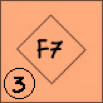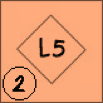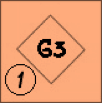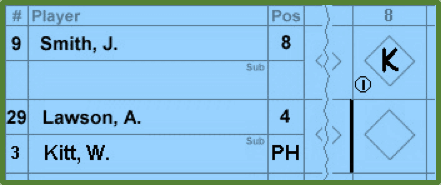How to Keep Score in Baseball
A baseball scorecard contains an incredible amount of information. Official scorecards are sold at the baseball stadium, but one can create their own scorecard. Scorecard books are perfect for those keeping record of a team for the whole season. Baseball scorecards allow us to keep record of how each player performed on the team in minute detail. Once knowing how to keep score in baseball is understood, creating a scorecard becomes easy and fun, as well as serving the purpose of keeping records of vital player information.
The information recorded on a baseball scorecard is “coded” out of necessity due to space limitations. A lot of the abbreviations and symbols used are familiar to most people who follow baseball on television, where some of the same symbols and abbreviations are found on the bottom of the screen. At the stadium, the batting lineups displayed in the outfield contain the same symbols identifying players, their numbers and even batting averages.
However, a great deal more information is found on baseball scorecards. It keeps track of the activity of each player and what occurs when he comes to the plate, which innings he came to bat, and whether he hit, flied out, grounded out, reached base on an error, how many times he scored, his RBI production and much more.
There are different ways to keep score. You can try several methods and choose the one you like most. If you’re keeping score of a little league game, you can use the simplest method. However, for high school or college games, the play on the field is more complex so you’ll need to take an approach that captures every play and the production of every batter.
The baseball scorecard also keeps record of the pitcher’s production as well as field errors. Some personalized scorecards include number in attendance at the stadium, weather conditions at the game, and the length of the game.
Field Position Designations
Here are the symbols used to identify each player position and the number designated to his position.
POSITION ABBREVIATION NUMBER DESIGNATION
| First Base | 1B | 3 |
| Second Base | 2B | 4 |
| Third Base | 3B | 5 |
| Shortstop | SS | 6 |
| Left Field | LF | 7 |
| Center Field | CF | 8 |
| Right Field | RF | 9 |
| Pitcher | P | 1 |
| Catcher | C | 2 |
| Designated Hitter | DH | — |
Below is the baseball diamond with the field positions and their corresponding number.

Typical Baseball Scorecard Design
Information is written in on a baseball scorecard from left to right. There are grid boxes in which is placed the player’s name and his playing position. The batting lineup is listed on the left, each player listed vertically underneath one another. To the right of each player’s name are 10 rows which represent each inning of the game. So each player has 10 boxes in a horizontal row that stretches across the scorecard. Within each box is an outline of a diamond shape. The scorekeeper will draw along the lines of the outlined diamond in pencil to record what occurred on the play when the hitter came to the plate.
Above the grid at the top is general information about the game. The scorekeeper writes in the names of the two teams, the date of the game, game start and end time, and the weather conditions at game time (sunny, cloudy, rain, etc). There is a field for the names of the umpires. At the bottom right, the scorekeeper enters his or her name.
Underneath the main grid is an area reserved for pitcher information, his name, wins and losses record as well as how many innings he pitched in the game. Further to the right and much like the records kept for each hitter, the scorekeeper writes in how many hits, runs and strikeouts each pitcher had in the game. The scorekeeper will record how many wild pitches the the pitcher threw, if any, and his total bases given up. Below is a sample scorecard.

Scorecard Abbreviations
There are over 70 abbreviations that can be used on a scorecard to record the progress and activity of the baseball game. Think of the notation written on the scorecard as “scorekeeper shorthand”, due to fact that an abbreviation exists for every possible scenario in the game.
Below is the list of all the abbreviated symbols you’ll need to enter the vital statistics of the game onto a scorecard. You can use the horizontal shaped scorecard in this article above as your template, and the abbreviation sheet below as a reference.
Note that the boxed in areas where you will be entering play information have diamond shapes at their center. You will use this diamond to draw over.
Examples of Scorekeeping

Above is a portion of your score card. We’ve entered the names of the first four batters in the lineup. This is the top of the batting order. Note how information about each batter is written on the scorecard. Here is a description of the information in each column from the left to the right.
- #: the player’s number found on his short.
- Player: Name of the player, last name first. “Smith, J.” The first batter.
- Pos: The player’s position on the field. “8”. This designates his field position as described above. Position 8 is center field.
The next column to the write for “Smith, J.” has a diamond shape in the middle of the box. The “1” at the top indicates the inning. This is at the start of the game and it’s the first inning.
Now let us imagine “Smith, J.” had a leadoff base hit. It was a single. With your pencil, draw a line over the line of the diamond on the right. This indicates that Smith got a base hit and is on first base.

Although the line you’ve drawn indicates a base hit single, it’s a good idea to write in with letters that he made it to first base. You would draw in “1B” as indicated above.
You can also indicate what part of the field Smith hit to by drawing a second line attached to the first one.

The second line dawn indicates Smith hit a single base hit to center field. You don’t have to indicate where the baseball went when hit, but it adds even more information that could be useful. For example, if the coach had daily records of Smith’s hitting, he could find a repeating pattern. He may find, for instance, that Smith tends to hit the ball to a certain part of the field more often and may use him in a sacrifice situation in the future to move up runners.
Now there are no outs and Smith is on first base. Next up to bat is “Lawson, A.” Lawson strikes out. We will designate that he has struck out swinging. When this happens, you draw in a forward “K” for strikeout, in the center of the diamond.

It is a good idea to record as much information as possible. You’ve recorded that Lawson has struck out swinging. But Lawson has also made the first out of the inning. It can then be scored as follows.

So now you’ve recorded Lawson has struck out but he has also made the first out of the inning.
Next to the plate is the third batter, “Henry, D.” While Henry is at bat, Smith, the first batter, attempts a steal to second base and is successful. Now you can modify Smith’s box to include the record of him having stolen second base.

Here it’s indicated that Smith stole second base, and it’s designated that Smith stole while Henry was at bat, by Henry’s player number, “17.” The designation for a stolen base is “SB.” Refer to the list below.
You do not need to indicate Henry’s player number. It can simply be indicated as a stolen base, or SB. It is up to you how much detail you want to record on your scorecard. But remember, the more information, the better.
Henry, still at the plate, draws a walk from the pitcher.

A walk is designated as “BB.” Another way to indicate a walk is “W.”
Now, Smith is on second base, and Henry is on first, with one out in the inning. Next up to bat is “Jones, T.” Jones hits a ground ball to the shortstop. The shortstop fields it and tosses it to the second baseman, who tags the second base bag and throws to first. The play ends as a double play.
Remember the player numbers discussed earlier.
- Shortstop: 6
- Second Baseman: 4
- First baseman: 3
Jones has hit into a 6-4-3 double play. Now there are three outs and the inning is over. You will record this in the box, but you will also record the double play in the previous batter’s diamond box. Here are two examples that are a little different, but show clearly how it’s written on the scorecard.
Henry is forced out at second following the shortstop’s throw. Jones, whose player number is 33, is entered in Henry’s box. Henry’s force out at second base resulted in the 2nd out of the inning. The number “2” designates the out.

Jones hit in the double play, and we know it was a 6-4-3 double play, so we record the play in Jones’s box. “DP” “means double play”. The number”3” indicates it is the third out of the inning.

Here is how your scorecard should look at the end of the inning.

Note the diagonal slash at the bottom of the box of Jones’s box. This is also the way to designate the end of the inning, instead of drawing a long line through the column. It is much neater than having straggling lines. But again, this is up to the individual discretion of the scorekeeper.
Recording Balls and Strikes
Some scorecards include 5 cubed boxes inside the box with the diamond to indicate balls and strikes. The one included here above, does not. However, in this version of a scorecard, you mark balls and strikes in the bottom left hand corner of the box. You don’t need to be sequential, you can simply designate each strike aor ball with an “X”, or designate “1” as a ball, and “2” as a strike. The method here, with balls on the left and strikes on the right, is just one way you can keep track. It is clean and easily understood.

When the inning comes to an end, no more batters will be coming to the plate. Draw a vertical horizontal line in the first column through the boxes.
Scoring Designations for other Game Situations
- Getting on Base
The different hits players make are singles, doubles, triples, home runs, sacrifice flies and bunts. Here are the designations for each on the scorecard. There are also different ways to get on base: hit by pitcher, reaching on a fielding error, a fielder’s choice hit, a wild pitch and a passed ball.
Double

Triple

Home Run

Grand Slam Home Run

Hit by Pitch

Fielder’s Choice

Error

Wild Pitch

Ground Rule Double

Passed Ball

- Batter is Out
Called Strike 3 (“K” is reversed).

Strikeout Swinging

- Fielding Out
Note the “F” designates “Fly out,” and “7” indicates where the ball was caught for the out. Each place on the field where the out occurred is indicated in the box.
Fly Out to Left Field

Fouled Out to Right Field

Line Out to Third

Ground Out to First Base

Unassisted Put Out

Scoring Substitutions
Every game has at least one substitution. Coaches will replace pitchers, make a double switch, a batter is in a slump, an injury, or maybe for strategic reasons. These changes in the game are notated on the scorecard.
Note that on the attached sample scorecard, there is a line under each player’s name that is blank. Here is where you can write in the name of the player who substitutes for the starting player.

Note also that in the sample above, Lawson is being taken out of the game. It is the 8th inning. The previous player, Smith, struck out. Maybe Lawson is not hitting well on this day and the team may be behind at this late point in the game. So he substitutes “Kitt W” for Lawson, designated as the pinch hitter, or “PH”. A vertical line is drawn to draw attention to the substitution better. The vertical line is not required but when the time comes after the game for the scorekeeper to draw the game statistics from the scorecard, the line makes the substitution stand out.
Scorekeepers can make any kind of markings they wish to keep track of the events of the baseball game. They can even use fine line markers in different colors to make notations on the scorecard.
Postgame Tabulation and Statistics Gathering
Scorekeepers can draw, or “cull” a lot of useful information from a game scorecard. Everything from how many times a player got hits, how often they walked or struck out are just a few examples. From this, using a calculator, you can compute a player’s batting average, stolen base percentage and on base percentage from the scorecard.
Going a little deeper, you can compute bating averages for players when they faced right handed pitcher versus left handed pitchers. In general, though, your job is to compile data and present it as useful information to the coach to help him make decisions regarding his lineup order and his player’s production for the next game.
Here is the most important information you need to cull from the scorecard.
- Total Runs
- Total Hits
- Total Errors
- Total number of passed balls
- Total number of men left on base
Here is the information you need to obtain about pitching performance from the scorecard.
- Innings pitched
- Total number of batters faced
- Total number of strikeouts
- Total number of walks
- Total number of wild pitches
- Total number of earned runs given up
- Balks and batters hit
Additionally if needed you can detail the kind of its each batter made (number of singles, doubles, etc), total number of runs batted in and so on. The choice in the end is up to you, or the coach if he requests it.
Statistics you wish to keep can be drawn from one scorecard only or from all the scorecards of each game for which scorecards were made. Here is the information available to you with a set of season scorecards.
- Base on Balls Percentage
- Season Batting Average
- On base percentage
- Total number of stolen bases and stolen base percentage (tries divided by successful attempts)
- Strikeouts and strikeout ratios
- Slugging percentage (total bases divided by at bats, and there is a simple formula you can use to plug numbers into).

Real benefits can come from culling statistics from your scorecards, especially towards the end of the season when the team is in a playoff race or if they are battling for first place. Stats on each player can help coaches put them in the most beneficial spots in the batting order, or go with players whose strengths are discovered form the scorecard.


